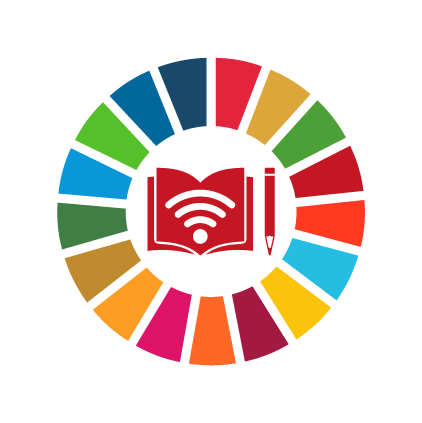Mozambique
Background Information
Region
Sub-Saharan Africa
World Bank income group
Low income
Percent of population aged 10-24
33% (UNFPA, 2023)
Total primary school age population (both sexes)
6,318,046 (UIS, 2022)
Total secondary school age population (both sexes)
3,744,941 (UIS, 2022)
Proportion of women aged 20-24 years who were married or in a union before age 18
(% of women aged 20-24)53%
Source: UNSDG , 2015
Adolescent birth rate
(per 1,000 women ages 15-19)180
Source: UN Human Development Reports , 2016
Percentage of women who ever experienced physical violence since age 15
(% of women 15-49)24%
Source: DHS , 2015
Percentage of married women employed in the last 12 months
(% of married or in-union women 15-49)46%
Source: DHS , 2015
Education Snapshot Back to Top
Number of years of free primary and secondary education guaranteed in legal frameworks
No data available
Percentage of upper secondary schools providing life skills-based HIV and sexuality education within the formal curriculum or as part of extra-curricular activities
No data available
Proportion of schools with access to single-sex basic sanitation facilities
Percentage of schools-
Primary 48%
(2016)
Source: UIS
Women as a percentage of teachers in tertiary education
Women as a percentageSource: UIS , 2018
Men as a percentage of teachers in pre-primary education
No data available
Expenditure on education as a percentage of total government expenditure
% GDP spent on educationSource: UIS , 2021
Gender parity index for achievement in mathematics, by education level (ratio)
No data available
Gender parity index for achievement in reading, by education level (ratio)
No data available
Proportion of students at the end of primary education achieving at least a minimum proficiency level in reading
-
Female 38%
-
Male 36%
Female: UIS, 2013
Male: UIS, 2013
Proportion of students at the end of primary education achieving at least a minimum proficiency level in mathematics
-
Female 15%
-
Male 16%
Female: UIS, 2013
Male: UIS, 2013
Experiencing bullying in the last 12 months in lower secondary education
-
Female 46%
-
Male 45%
Female: UNESCO, 2015
Male: UNESCO, 2015
Youth not in education, employment or training
No data available
Completion rate
No data available
No data available
No data available
Out-of-school rate
Primary school
-
Female 7%
Female: UIS, 2016
No data available
No data available
Legal Frameworks Back to Top
Presence of legislation on child protection, to prevent corporal punishment in schools
3
Limited protection from violence in educational institutions
Source: HerAtlas , 2019
Presence of legislation protecting the right to education without discrimination based on sex/gender
4
Enshrines right to education, only for a group of persons, without discrimination based on sex/gender
Source: HerAtlas , 2019
Presence of legislation to protect and facilitate education of pregnant adolescent girls
2
No explicit protection of the right to education of pregnant and parenting girls
Source: HerAtlas , 2019
Existence of processes to support coordinated action on gender equality in and through education by ministries, civil society, youth organizations and other actors
Data coming soon!
Existence of systematic processes to review and update curricula and learning resources, with a view to eradicating gender stereotypes and promoting gender equality
Data coming soon!
Training on gender-responsive pedagogies is embedded in teacher training programmes
Data coming soon!
Programs Back to Top
Project/Program
Addressing Gender Norms in Formal Education
Network/Convening/Conference
Better Life, Better Future
Project/Program
Clean Water Wells
Funding Initiative/Portfolio
Community Grants Program
Funding Initiative/Portfolio
Comprehensive scholarship programme
Funding Initiative/Portfolio
Education Out Loud (EOL)
Advocacy Campaign/Project
Enough
Project/Program
Gender Equality in Education Snapshot (GES)
Funding Initiative/Portfolio
Gender-Responsive Education and Transformation
Project/Program
GIRLS Inspire project
Project/Program
Global Programme to End Child Marriage
Project/Program
Project: Access to basic education through REFLECT functional literacy to out-of-school young people
Project/Program
Schools for Africa
Project/Program
Science, Technology, Engineering and Mathematics
Project/Program
Service-learning for WASH in schools
Project/Program
Successful Transition and Advancement of Rights for Girls (STAR-G)
Research Project/Report/Study
The COVID-19 Crisis and its Impact on Global Education
Research Project/Report/Study
The Effect of COVID-19 on Education in Africa and its Implications for the Use of Technology: A Survey of the Experiences and Opinions of Educators and Technology Specialists
Funding Initiative/Portfolio
UNESCO Malala Fund for Girls’ Right to Education
Project/Program
Unlocking Talent Through Technology
Government Programs Back to Top
Project/Program
Adolescent Girls' Programming Community of Practice
Project/Program
Literacy Boost
Project/Program
Digital literacy trainings
Project/Program
DREAMS
Project/Program
Mozambique Demographic Transition Waala Programme
Advocacy Campaign/Project
Gender at the Center Initiative (GCI)
Project/Program
Rapariga Biz
Project/Program
Empowerment of Women and Girls
Project/Program
UNICEF Mozambique Accelerated School Readiness Pilot Programme
Project/Program
Harnessing the Demographic Dividend
Project/Program
TELESCOLA: Tele-schooling in Mozambique
Project/Program
Quality Teacher Training and Improved School Infrastructure in Mozambique
Project/Program
Improving Learning and Empowering Girls in Mozambique
Network/Convening/Conference
Southern and Eastern Africa Consortium for Monitoring Educational Quality (SACMEQ)
Policy & Frameworks Back to Top
Declaration
Endorsement of the Safe to Learn Call to Action
Mozambique has officially endorsed the Safe to Learn Call to Action, pledging to involve various stakeholders in advancing positive social norms and gender equality. The Government of Mozambique will utilize the Programmatic Framework and Benchmarking Tool to ensure that parents, teachers, children, local government officials, and community leaders acknowledge the harmful effects of school violence and work towards fostering positive social norms and gender equality.
